Found Energy, a startup founded in 2022 by Peter Godart (a former NASA scientist ), is commercializing a solution to convert aluminum into a source of heat and carbon-free hydrogen. According to published data, the aluminum, after reaction, can release 15.8 MJ of heat per kilogram and produce hydrogen with an energy density of up to 36.3 MJ/liter, nearly eight times that of liquefied hydrogen (7.2 MJ/liter by volume). The company has raised $12 million in seed funding and plans to install its first system at a tool manufacturing facility in the Southeast early next year, using locally sourced aluminum scrap as input.
Developments and status of commercialization
In late October, Found Energy's lab announced it was preparing to install heat and hydrogen supply equipment for its first industrial customer. No pricing or commercial discount data for the solution is available yet; current focus is on testing, demonstrations, and the initial field deployment of the system early next year.
Key technology and data platforms
- Heat released when aluminum is oxidized: 15.8 MJ/kg.
- The hydrogen produced has an energy density of up to 36.3 MJ/liter; for comparison, liquefied hydrogen reaches 7.2 MJ/liter.
- The aluminum-water reaction produces aluminum oxide and releases heat along with hydrogen; the hydrogen is produced on-site, avoiding the risk of storing gas or liquid.
- The traditional obstacle is the surface layer of aluminum oxide blocking the deep reaction; Found Energy uses a liquid metal catalyst that penetrates the microstructure, stripping away the oxide layer so the reaction proceeds continuously like a "boiler".

Comparing historical data and expert opinions.
The idea of using aluminum as a fuel has been explored for decades. Geoff Scamans (Brunel University, London) researched the application of aluminum as a gasoline substitute for vehicles in the 1980s, but it was unsuccessful due to the inefficient aluminum-water reaction. Peter Godart acknowledges that the oxide layer barrier has caused "people to try and abandon this idea many times," but believes that a corrosive liquid metal catalyst is a breakthrough in sustaining the reaction.

Trend and scenario analysis
In the short term, Found Energy aims to provide on-site industrial heat and hydrogen to manufacturing facilities, starting with a tool factory in the Southeast. In the medium term, if operating stably and expanding, the model could simultaneously address two bottlenecks: reducing emissions in the cement and steel industries and processing large volumes of difficult-to-recycle "dirty" aluminum scrap.
Raw material supply and demand capacity
| Target | Mass | Source |
|---|---|---|
| Aluminum scrap collected each year is not recycled. | Over 3,000,000 tons | International Aluminum Institute |
| Aluminum is either not collected or is burned with the trash. | 9,000,000 tons/year | International Aluminum Institute |
| Aluminum is needed for the "closed-loop" model to meet all industrial heating requirements. | 300,000,000 tons (≈4% of reserves) | According to the company's estimates. |
Regarding the material cycle, the company plans to recover aluminum hydroxide from the reactor and use clean electricity to reduce it to metallic aluminum, creating a "closed-loop" input. If scaled up as internally estimated, the amount of aluminum involved in the cycle would be approximately 300,000,000 tons, equivalent to about 4% of the Earth's aluminum reserves.
Potential impact on related industries
- Heavy industry: Carbon-free heat sources can reduce emissions in the cement and steel industries.
- Aluminum recycling market: The potential for consuming "dirty" aluminum opens up a channel for processing difficult-to-recycle scrap, improving the material's lifecycle efficiency.
- Hydrogen: On-site hydrogen production from an aluminum-water reaction avoids the risks associated with storing gaseous or liquid hydrogen.
Variables to monitor
- Details regarding the catalyst's composition have not yet been released.
- There is no data available on cost, performance, and reliability at commercial scale.
- The first system deployment and on-site operational feedback will be available early next year.
In a lab demonstration, Godart said that the aluminum reacted to instantly bring water to a boil upon addition, highlighting the speed of energy release: "The time it takes to boil water on your stovetop will be much slower than this."
Source: https://baolamdong.vn/nhom-thanh-nhien-lieu-mat-do-nang-luong-gap-8-lan-hydrogen-397616.html




![[Photo] Prime Minister Pham Minh Chinh holds a phone call with the CEO of Russia's Rosatom Corporation.](/_next/image?url=https%3A%2F%2Fvphoto.vietnam.vn%2Fthumb%2F1200x675%2Fvietnam%2Fresource%2FIMAGE%2F2025%2F12%2F11%2F1765464552365_dsc-5295-jpg.webp&w=3840&q=75)

![[Photo] Closing Ceremony of the 10th Session of the 15th National Assembly](/_next/image?url=https%3A%2F%2Fvphoto.vietnam.vn%2Fthumb%2F1200x675%2Fvietnam%2Fresource%2FIMAGE%2F2025%2F12%2F11%2F1765448959967_image-1437-jpg.webp&w=3840&q=75)






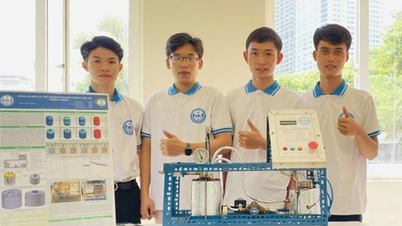






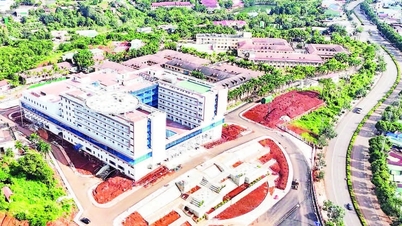


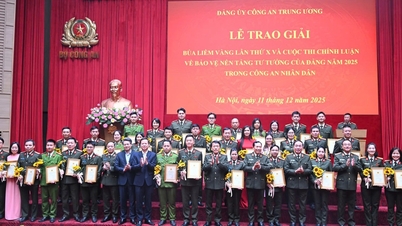


































![[OFFICIAL] MISA GROUP ANNOUNCES ITS PIONEERING BRAND POSITIONING IN BUILDING AGENTIC AI FOR BUSINESSES, HOUSEHOLDS, AND THE GOVERNMENT](https://vphoto.vietnam.vn/thumb/402x226/vietnam/resource/IMAGE/2025/12/11/1765444754256_agentic-ai_postfb-scaled.png)

















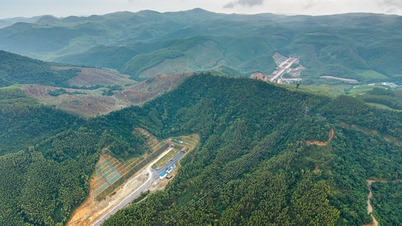





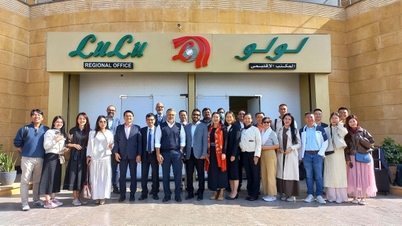






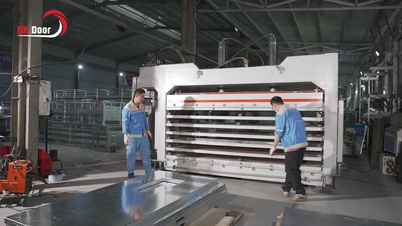



















Comment (0)